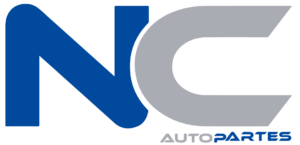In today’s fast-paced business environment, organizations are constantly seeking ways to improve performance, increase efficiency, and make data-driven decisions. One key tool in achieving these goals is a real-time dashboard, which provides an instant snapshot of critical Key Performance Indicators (KPIs) that drive https://gamdomcasinouk.com/ business outcomes.
The Importance of Real-Time Dashboards
Real-time dashboards offer several advantages over traditional reporting methods, including:
- Timely Decision-Making : With up-to-the-minute data, stakeholders can respond quickly to changes in the market or organization.
- Improved Performance Tracking : KPIs are monitored and analyzed continuously, allowing for swift identification of areas that require improvement.
- Enhanced Collaboration : Real-time dashboards facilitate collaboration among teams by providing a shared understanding of organizational performance.
Choosing the Right Metrics
A real-time dashboard’s effectiveness depends on selecting relevant, meaningful metrics. These should align with business objectives and address key questions such as:
- What are our current sales figures?
- Are we meeting customer satisfaction targets?
- Are there bottlenecks in production that need attention?
Key Performance Indicators (KPIs) can be categorized into four types:
- Lagging indicators : Reflect past performance, such as year-over-year revenue growth.
- Leading indicators : Signal future trends or potential issues, such as website traffic or customer complaints.
- Key success factors : Are critical to achieving strategic objectives, like employee engagement or product quality.
- Predictive analytics : Use data and machine learning algorithms to forecast outcomes.
Designing an Effective Real-Time Dashboard
When creating a real-time dashboard:
- Prioritize simplicity : Avoid clutter by focusing on the most essential metrics and visualizations.
- Use intuitive design : Ensure that users can quickly understand the meaning behind each metric and chart.
- Choose relevant visualization tools : Examples include tables, charts (e.g., bar graphs, line plots), gauges, and maps.
- Consider mobile optimization : A responsive design allows for seamless interaction with the dashboard on various devices.
Real-Time Dashboard Tools
A variety of software platforms can help you create a real-time dashboard:
- Tableau : Offers an intuitive interface for connecting to various data sources and creating interactive visualizations.
- Power BI : Provides a range of visualization tools and a robust data modeling engine.
- Google Data Studio : A free, web-based tool that enables users to connect to Google Analytics and create custom reports.
- Kibana : An open-source analytics platform for Elasticsearch that allows for real-time data exploration.
Best Practices for Real-Time Dashboard Implementation
To ensure successful adoption of a real-time dashboard:
- Establish clear objectives : Communicate the purpose and benefits of the dashboard to stakeholders.
- Train users : Provide hands-on instruction on how to navigate and interpret the dashboard.
- Continuously monitor and improve : Regularly evaluate user feedback and adjust the dashboard design as needed.
Case Studies: Real-Time Dashboard Success Stories
Several organizations have successfully implemented real-time dashboards, resulting in significant improvements:
- Amazon Web Services (AWS) : Uses a real-time dashboard to track cloud infrastructure utilization and optimize resource allocation.
- Netflix : Employed a real-time analytics platform to monitor streaming quality, customer retention, and content performance.
- Coca-Cola : Created a global reporting system using Power BI to analyze sales data, market trends, and supply chain efficiency.
Conclusion
Real-time dashboards offer unparalleled insights into business operations, enabling organizations to make informed decisions quickly. By selecting relevant metrics, designing an effective dashboard, leveraging the right tools, and following best practices for implementation, your organization can unlock the full potential of real-time KPI monitoring and performance tracking.
